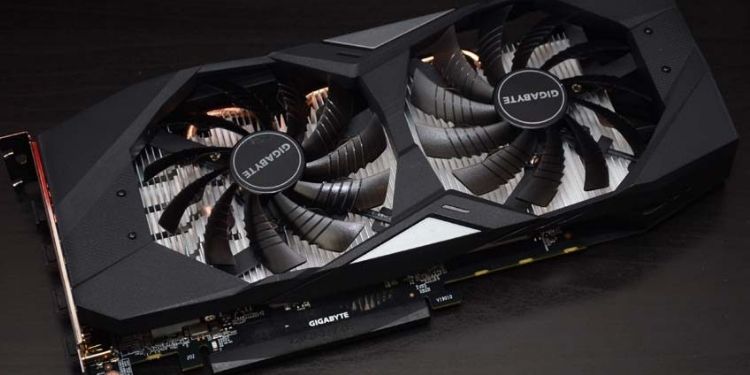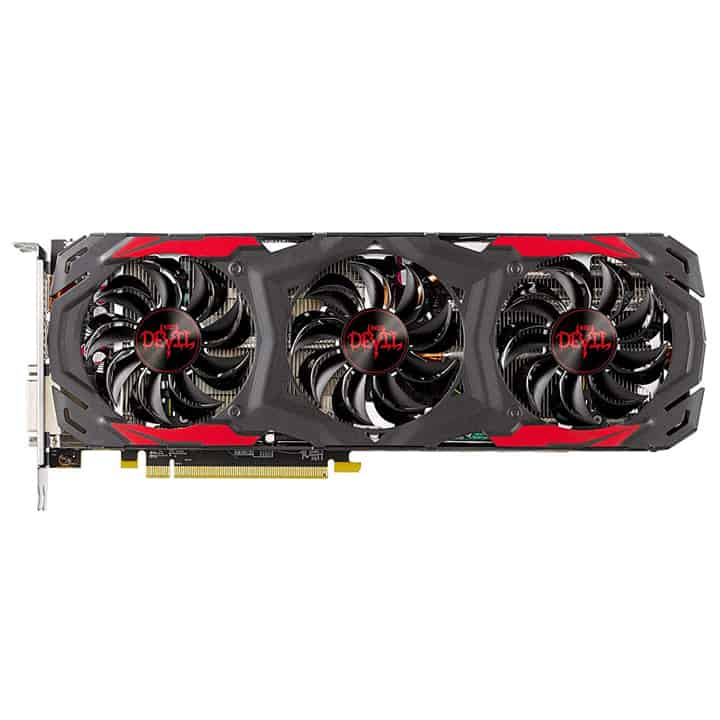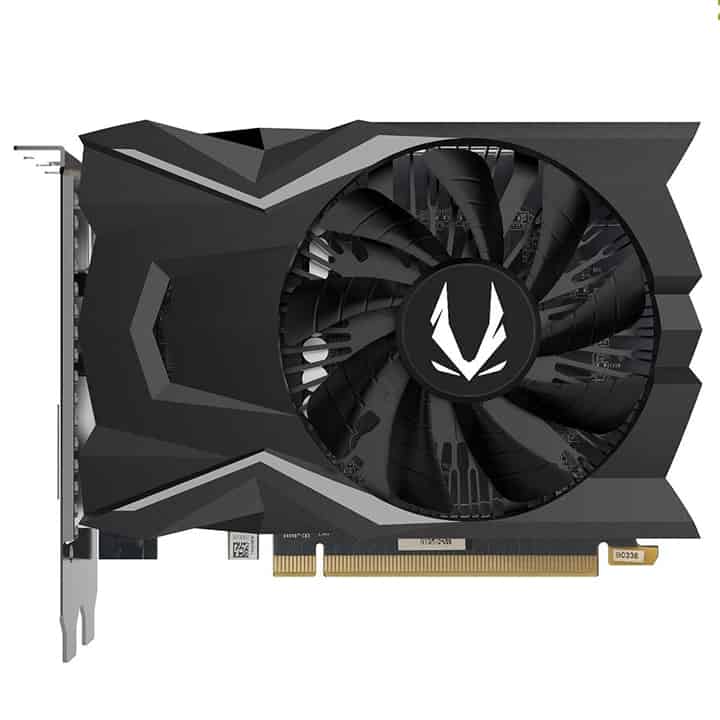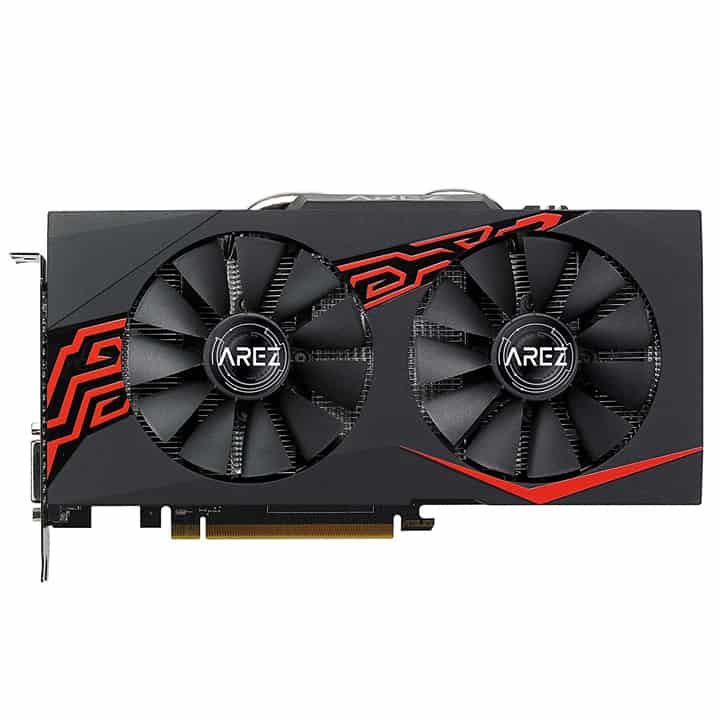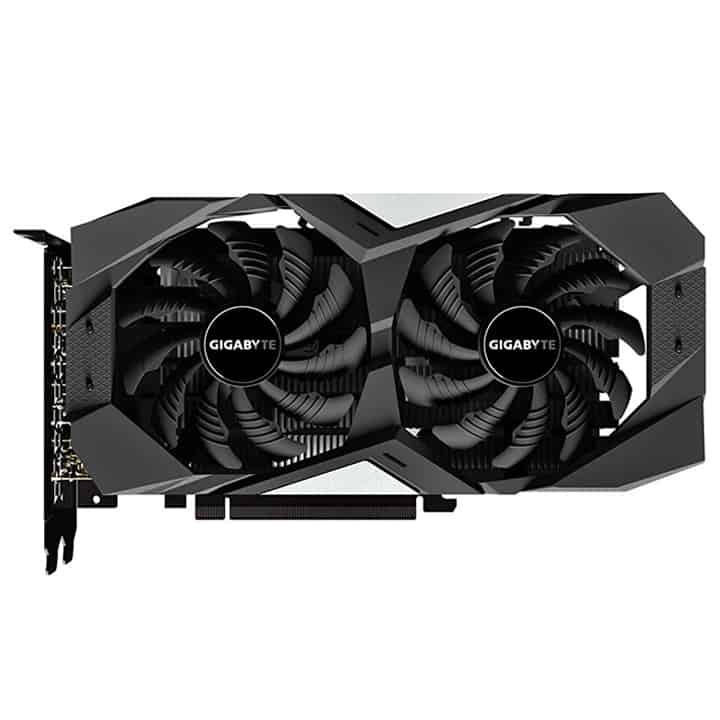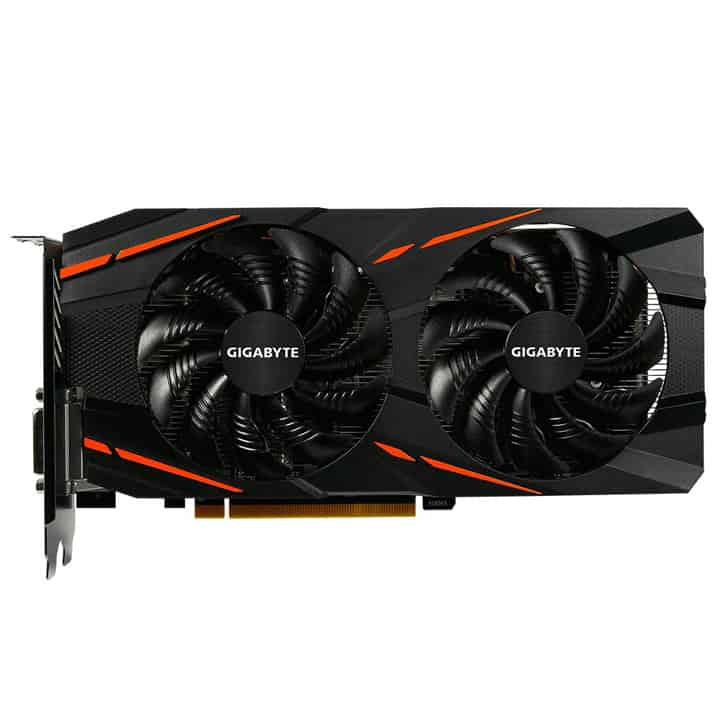The thing about finding the best graphics card under $200 is that this is one of the most competitive price ranges on the GPU market, just behind the $200-$300 range. Despite all the marketing focusing on things like the latest, greatest, Super Saiyan RTX 2080 Ti most people don’t have a spare kidney to put down for a graphics card.
That makes shopping for the best GPU under $200 a smart move, especially for budget/mid-range gaming PC builds. Many GPUs in this price range can also be used to revive old office PCs and prebuilts to turn them into proper gaming PCs. You can also check out our guide to the best GPUs for under $100 right here.
If you see any jargon or specs you’re unfamiliar with in the following article, don’t worry. We’ve included a buying guide at the bottom of the article that should help answer all of your questions. Leave a comment if you still have any after that.
Enough pretense, though. Let’s find the best video card under $200.
Lowest price
RX 570 4GB (PowerColor)
- Architecture: AMD Polaris
- Clock Speed: 1320 MHz
- VRAM: 4GB GDDR5
- Width: 2-Slot
- Length: 310 mm
- Power Requirements: 450W PSU, 1 8-Pin
- Ports: 3 DP, 1 HDMI, 1 DVI
best for prebuilt PCs
GTX 1650 Super Compact (ZOTAC)
- Architecture: Nvidia Turing
- Clock Speed: 1695 MHz
- VRAM: 4GB GDDR5
- Width: 2-Slot
- Length: 151 mm
- Power Requirements: 300W PSU, No 8-Pin
- Ports: 1 DP, 1 HDMI, 1 DVI
best RX 570 under $200
RX 570 8GB (ASUS)
- Architecture: AMD Polaris
- Clock Speed: 1266 MHz
- VRAM: 8GB GDDR5
- Width: 2-Slot
- Length: 239 mm
- Power Requirements: 450W PSU, 1 8-Pin
- Ports: 1 DP, 1 HDMI, 1 DVI
best GTX 1650 under $200
GTX 1650 OC (Gigabyte)
- Architecture: Nvidia Turing
- Clock Speed: 1785 MHz
- VRAM: 4GB GDDR5
- Width: 2-Slot
- Length: 229 mm
- Power Requirements: 300W PSU, 1 6-Pin
- Ports: 3 HDMI, 1 DP
best mid-range under $200
RX 580 8GB (Gigabyte)
- Architecture: AMD Polaris
- Clock Speed: 1355 MHz
- VRAM: 8GB GDDR5
- Width: 2-Slot
- Length: 232 mm
- Power Requirements: 500W PSU, 1 8-Pin
- Ports: 3 DP, 1 HDMI, 1 DVI
Table of Contents
1. RX 570 4GB (PowerColor)
The best gaming graphics card under $200 for most people
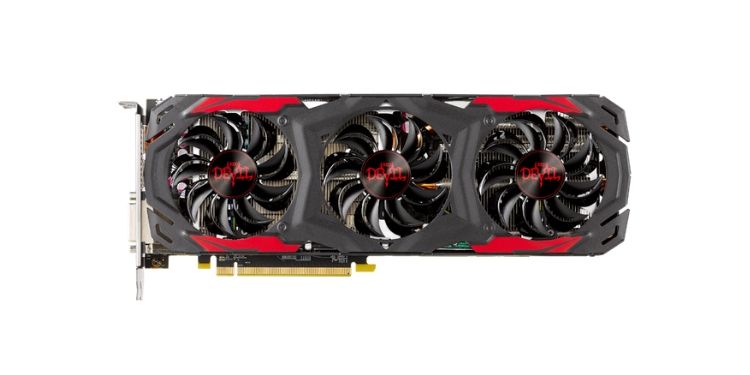
- Architecture: AMD Polaris
- Clock Speed: 1320 MHz
- VRAM: 4GB GDDR5
- Width: 2-Slot
- Length: 310 mm
- Power Requirements: 450W PSU, 1 8-Pin
- Ports: 3 DP, 1 HDMI, 1 DVI
- The best performance per dollar of ANY GPU on the market
- Lowest price
- Outperforms the GTX 1650 in most scenarios
- Too large to fit in many prebuilt/office PCs
- More demanding power requirements
First up is our #1 value pick, the RX 570 4GB.
This is the best value graphics card on the market, period, and definitely the best value GPU under $200. At the time of writing, it’s retailing for only $140-- cheaper than all competing GTX 1650s-- while also outperforming those more expensive cards.
This better performance-per-dollar does come at a price, though… and that price is size. This is a 310 mm, dual-slot GPU that won’t fit inside many smaller PC builds, especially those with non-standard form factors. (Think: refurbished office PCs, which tend to have great CPUs but an empty GPU slot.) It also requires an 8-Pin power connector and a 450W PSU.
As long as your PC or build can fit and power this graphics card, there’s little reason not to get it. Unless you exclusively play Fortnite or Cemu Emulator, then the RX 570 4GB is the best card to buy in this price range.
2. GTX 1650 Super Compact (ZOTAC)
The best graphics card under $200 for prebuilt PCs
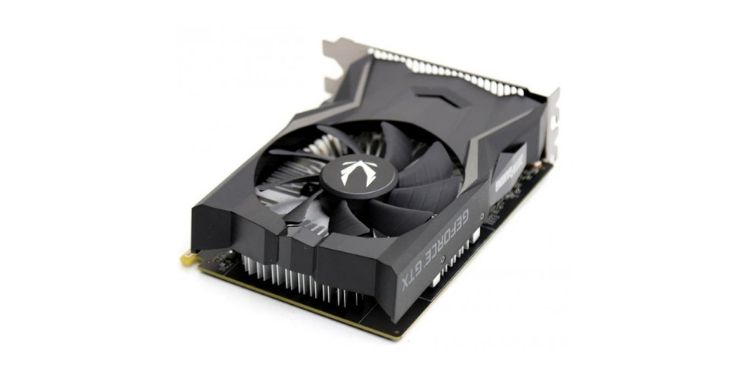
- Architecture: Nvidia Turing
- Clock Speed: 1695 MHz
- VRAM: 4GB GDDR5
- Width: 2-Slot
- Length: 151 mm
- Power Requirements: 300W PSU, No 8-Pin
- Ports: 1 DP, 1 HDMI, 1 DVI
- Small enough to fit in most prebuilt, office, and SFF PCs
- Low price
- Better in Fortnite and a few emulators than the 570
- Beaten by the RX 570 in most gaming scenarios
Next up is the best GPU under $200 for prebuilt PCs: the GTX 1650 Super Compact. As its name implies, this is an absolutely tiny graphics card. It’s less than half the length of the competing RX 570 listed above, and its 2-slot cooler design means that it should fit in just about any PC out there.
The minuscule size of this graphics card already makes it a viable choice for any prebuilt or SFF gaming PC, but it doesn’t stop there. The efficiency is what makes this GTX 1650 shine-- it only needs PCI Express power and a 300W PSU to run, no extra power cables required. For PCs where you cannot replace the power supply, this is a key advantage over the RX 570.
It’s not all sunshine and rainbows, though. The small size means overclocking is essentially impossible, especially since it can’t take an additional power cable.
Performance-wise, this card will be better for certain emulators (like Cemu) and a few very Nvidia-biased games, like Fortnite. In almost every other gaming performance scenario, this card will be slower than its AMD competitors.
If you’re looking for the best performance in Nvidia-favored applications and don’t need a small card, you should also consider the larger GTX 1650 listed below; although, there are several other GTX 1650’s that we like a lot.
3. RX 570 8GB (ASUS)
The best RX 570 under $200
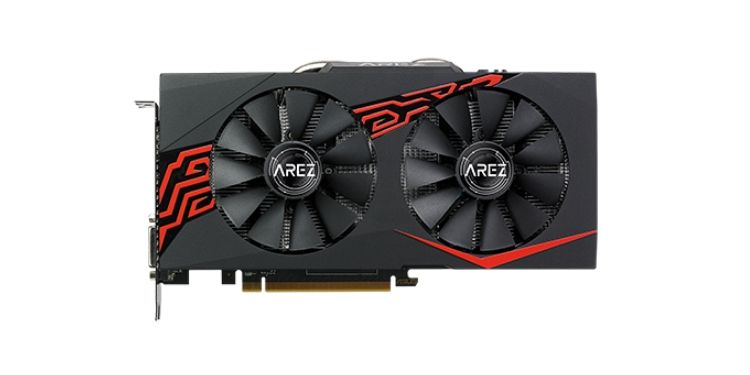
- Architecture: AMD Polaris
- Clock Speed: 1266 MHz
- VRAM: 8GB GDDR5
- Width: 2-Slot
- Length: 239 mm
- Power Requirements: 450W PSU, 1 8-Pin
- Ports: 1 DP, 1 HDMI, 1 DVI
- Still more powerful than the GTX 1650
- Large, beefy cooler enables better cooling and overclocks
- More VRAM enables light 1440p gaming
- Much larger and more power-hungry than GTX 1650
- A bit more expensive than a 1650
Let’s say the RX 570 appeals to you, but you want a bit more VRAM. An 8GB model of the RX 570 will offer better performance in VR and 1440p gaming scenarios, which should provide an experience on par with what you’ll see with an Xbox One X. (Xbox One X only has native 4K in a few scenarios, and this card can match those. Otherwise, the One X uses 1440p and 1800p scaling to achieve a 4K image, which you can do just as easily with this GPU.)
Like with the other RX 570, the same downsides apply here. This card is a bit bigger than many prebuilt PCs can fit, and it has hungrier power requirements than its Nvidia competition. This card is also a bit more expensive than the GTX 1650 or the RX 570 listed above but is still well under our $200 price limit.
For the extra money, you get a better version of the same GPU. Significantly better if you’ll be playing with a 1440p display or a 4K display.
4. GTX 1650 OC (Gigabyte)
The best GTX 1650 under $200
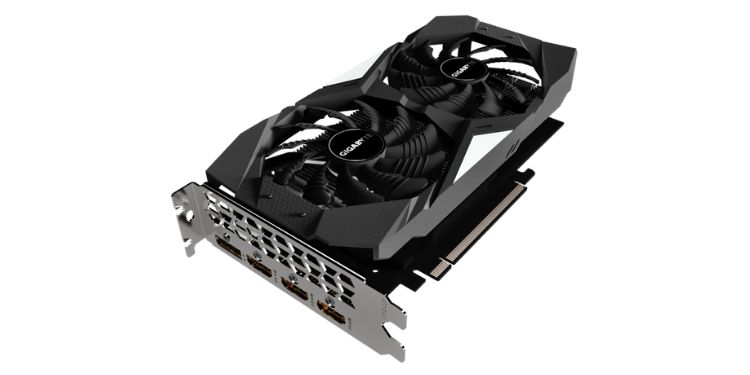
- Architecture: Nvidia Turing
- Clock Speed: 1785 MHz
- VRAM: 4GB GDDR5
- Width: 2-Slot
- Length: 229 mm
- Power Requirements: 300W PSU, 1 6-Pin
- Ports: 3 HDMI, 1 DP
- A larger GTX 1650, better-suited for overclocking
- Should still beat competing RX 570s in Fortnite and emulation
- No longer compatible with smaller/weaker prebuilts and office PCs
- Still beaten by the RX 570 overall
Nvidia’s last stand in the sub-$200 GPU range is this overclocked version of the GTX 1650. This GTX 1650 throws away a few of its main advantages over the RX 570 in order to improve cooling performance and add overclocking headroom.
If most or all of your apps are Nvidia-biased and you don’t need to stuff this into a small prebuilt with a small power supply, then this is the card you’re looking for. You’ll get to enjoy the full power of Gigabyte’s excellent Windforce cooler design, especially if you’re overclocking. (We highly recommend that you overclock this card, since you spent the extra cash for it.)
All that being said, if your apps aren’t particularly Nvidia-leaning, or if your PC can’t fit this GPU you should consider another entry on the list.
5. RX 580 8GB (Gigabyte)
The best mid-range graphics card under $200
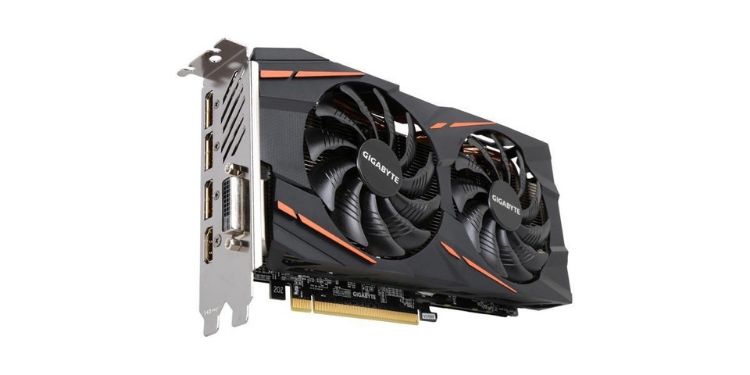
- Architecture: AMD Polaris
- Clock Speed: 1355 MHz
- VRAM: 8GB GDDR5
- Width: 2-Slot
- Length: 232 mm
- Power Requirements: 500W PSU, 1 8-Pin
- Ports: 3 DP, 1 HDMI, 1 DVI
- Beats the RX 570 and GTX 1650 alike by a fair margin
- Equipped for superb 1080p and decent 1440p gaming
- Highest price, right under $200
- Can’t fit or be powered in smaller prebuilts/office PCs
- If you have just a bit extra, you might as well get a GTX 1660
Last but certainly not least is the RX 580 8GB, which has finally dropped consistently below $200. If your hard limit is $200, this is the absolute best graphics card that you’re going to get for your money. It will overcome the GTX 1650’s architectural advantage when compared to the RX 570 in most scenarios (certain emulators still aren’t AMD-friendly), and it offers a fairly strong performance boost over the RX 570.
This is the definitive AMD graphics card, at least until the AMD Navi series launches later this year. If you want the best graphics card under $200, though, and all you care about is raw performance… This is the card you’re looking for.
If $200 isn’t your hard limit and you can afford to spend a little more, we recommend upgrading to this GTX 1660 (or one of these) for a respectable 10-15% performance boost in most games.
Buying The Best Graphics Card Under $200
In case you didn’t understand the specs thrown around in the reviews above, or still don’t know which card to choose, we have you covered. In this buying guide section, we’ll answer common questions and explain the key compatibility concerns in this price range.
What kind of performance can I expect in this price range?
When you’re buying a GPU for $200 or less, you’re primarily buying a graphics card for 1080p gaming. From $100 to $200, most cards are built to perform well at 1080p and high/max settings at 60 FPS in modern games. Compared to the lower-fidelity graphics on console (generally equivalent to mixed medium settings on PC) and common resolution/FPS compromises, you’re already getting a much better gaming experience.
A few of the higher-end cards in this section– those straining against that self-imposed $200 cap and more VRAM– are also well-suited for gaming at higher resolutions. We’ll dive into that below. Find all our recommended budget graphics cards right here.
Does VRAM matter?
Quite a bit… under certain circumstances.
More VRAM doesn’t generally contribute to raw performance, in the same way that more RAM in your PC doesn’t. VRAM is used for streaming textures, managing post-processing effects, and managing high resolutions.
In short, the more VRAM you have, the better your card will be able to handle higher resolutions like 1440p, 1800p, and 4K. The rest of the card still needs to keep up, though, and GPUs in this price range generally aren’t suited for playing modern games at a native 4K, regardless of VRAM.
For this price range, though…
4GB of VRAM is ideal for 1080p gaming at max settings and 1440p games with reduced settings.
8GB of VRAM is ideal for 1080p gaming at max settings, VR games, and 1440p games with high-resolution textures. With higher-end GPUs, this amount of VRAM is also suitable for tackling 1800p and 4K gaming scenarios.
Length, width, power, and compatibility
Now, let’s talk compatibility. This is especially important in this budget price range, so we’ve actually added a power spec to our reviews for this article.
Length
This will generally be the greatest barrier of entry. Length is measured in millimeters and is the most likely reason a graphics card won’t fit inside your PC. For users of prebuilt PCs and refurbished office PCs, this is especially a concern.
Be sure to compare our measurements to the dimensions inside your chassis before making any buying decisions. You should be fine with most standard ATX and Micro ATX cases, but it’s still better safe than sorry.
Width
Less important but still relevant for prebuilt users specifically is width. This is measured in PCI Express slots in your chassis with 2-Slot being the standard for most graphics cards. This won’t be a concern for any user-built PC (except certain slimline HTPCs and SFF ITX builds), but it can be a problem for certain prebuilts.
As long as you have at least 2 slots open in your chassis, you should be fine.
Power
This is the other big one for this price range.
While the RX 570 easily beats the GTX 1650 in raw performance, it consumes much more power and space than the GTX 1650. For many prebuilt PCs, the RX 570 is simply too large and power-hungry for their chassis and PSU to handle. Since you often can’t replace the power supply in a prebuilt office PC– or the PSU being used is nonstandard– this becomes even more problematic.
We’ve included both the required PSU wattage and the power connectors required in our GPU reviews above. Cards that don’t require a connector can be powered by the PCI Express lane, so long as the PSU requirement is still met.
Do I pick AMD or Nvidia?
Having difficulty choosing from our list above? This should help.
Pick AMD (aka, one of the RX cards) if:
- You want the most performance in this price range
- You have ample power and room to spare in your PC
- You want the best performance-per-dollar in this price range
Pick Nvidia (aka, one of the GTX cards) if:
- You need a smaller, more power-efficient GPU
- You don’t mind sacrificing a little bit of power to do it
- You’re playing mostly Nvidia-favored games (Fortnite and most modern emulators)
